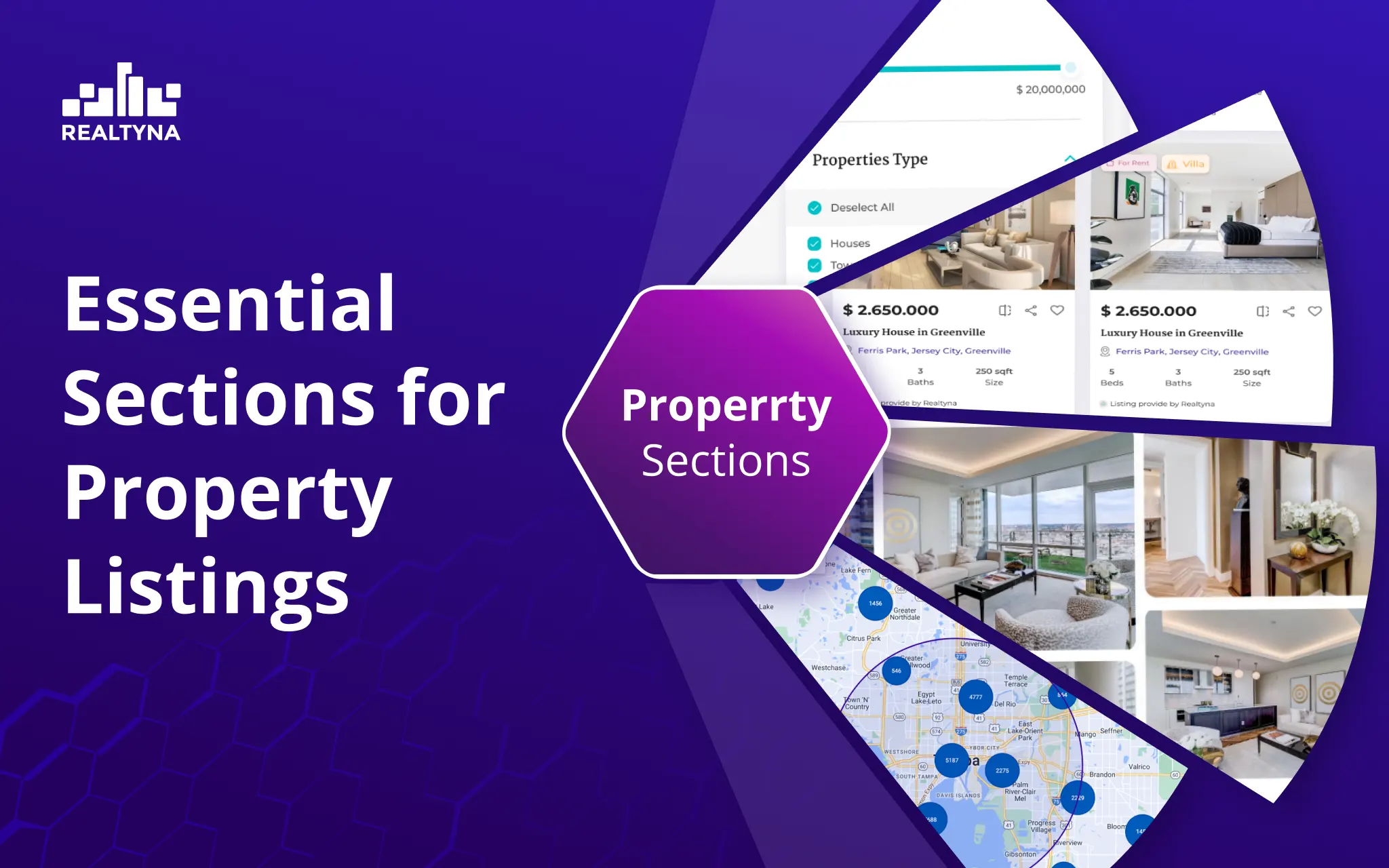
12 Essential Sections for Property Listings
Determining what details to include in a property listing can seem overwhelming. You have countless details about the home and neighborhood to highlight.
In this article, we discuss the essential elements every effective listing should contain – from descriptive overviews to amenities.
Let’s start ASAP!
The Basics:
1. Location
The location of a property is one of the most significant factors that determine its value and appeal.
A property’s proximity to amenities like schools, hospitals, public transit, shopping, and dining strongly influences its desirability.
Being within walking distance or a short drive of such amenities is ideal for most buyers and tenants.
Highlight the amenities near the listing and specify the travel time and mode of transport to reach them.
2. Neighborhood
Discuss the neighborhood the property is located in, including its demographics, crime rates, availability of green spaces, and recent developments.
Mention any nearby landmarks or points of interest. If it is located in a trendy, upcoming neighborhood, highlight the potential for strong future growth.
Discuss factors like zoning laws, and future residential and commercial developments that could impact the neighborhood.
Check out our Neighborhood add-on for creating pages for each special area/city/estate, etc.
3. Accessibility
Note the property’s accessibility and convenience regarding major roadways, public transit, and airports.
Discuss travel times to employment hubs and nearby cities. Proximity to public transit like buses, trains, and bike lanes appeals to many buyers and tenants and contributes to a property’s value.
4. Lot Size and Exterior
Note the lot size, any outdoor spaces like a backyard, patio, or balcony, and details about the home’s exterior such as architectural style, siding or facade, roof type, garage or carport, fencing, and landscaping. Provide the total square footage of the lot and building footprint.
5. Interior Layout and Features
Give an overview of the interior layout including the number of rooms and their dimensions and purposes.
Discuss special features like high ceilings, crown molding, built-in cabinetry or bookshelves, fireplaces, balconies, attics, or basements.
Mention if the property has central heating/cooling, and an alarm or security system.
6. Age and Upgrades
Specify when the home was built and the date of any major renovations. List any updates made within the last 5-10 years such as a new roof, siding, windows, plumbing, electrical, or HVAC system.
Room-by-Room Rundown:
7. Kitchen
The kitchen is often the heart of a home, so include specifics on cabinetry, countertops, appliances, and layout. Note the dimensions, material, number of cabinets and drawers, and countertop square footage.
List major appliances like the stove, oven, refrigerator, dishwasher, microwave, and any other built-ins. Describe the flooring type and any accent features like an island, pantry, or eat-in area.
8. Living Room
In the living room section, list the room dimensions, main flooring types like hardwood or carpet, any focal points like a fireplace or bay window, and the number of entrances/exits.
Note any built-in bookshelves or media centers and whether the space flows openly to other areas like the dining room. Describe the amount of natural light the room receives and its orientation in the home.
9. Bedrooms
For each bedroom, list the exact dimensions, number of windows and closets, flooring type, and any additional features like ceiling fans.
Note the size of the closet(s) and whether walk-in or standard. Describe the amount of natural light, room orientation, and location relative to living areas or full/half bathrooms.
10. Bathrooms
In the bathroom sections, list the total number of bathrooms and the dimensions of each.
Describe the flooring type, vanity, toilet, tub, and/or shower details like whether standard, garden, or walk-in.
Note the countertop material and cabinet details. List any additional features such as double vanities, linen closets, skylights, or whirlpool tubs.
Financials:
11. Pricing
For any property listing, the asking price is arguably the most important detail.
When determining an asking price, you will need to consider the property’s fair market value by evaluating recent selling prices of comparable properties in the local market.
12. Property Taxes
Local governments and school districts administer property taxes. The tax amount depends on the property’s assessed value and the tax rates in that location.
Property tax amounts can significantly impact a property’s attractiveness to buyers, so you must provide an accurate estimate of the annual property taxes.
It is also important to note that property tax amounts are subject to change each year based on fluctuations in property values and tax rates.
As you can see, each section of a property listing plays an important role in effectively showcasing the home.
Just make sure everything is set and show perfectly.
That’s all for now.


Sorry, the comment form is closed at this time.